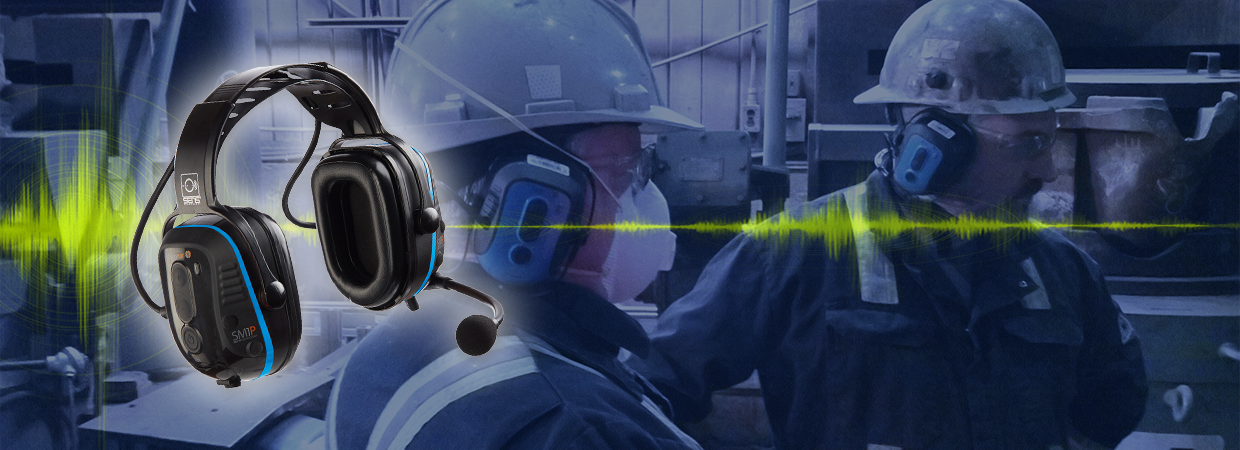- Home
- Blog
- Headset Maintenance
- 3 Ways to Extend Life of Your Safety Headset with Proper Maintenance

3 Ways to Extend Life of Your Safety Headset with Proper Maintenance
Let’s face it. Most safety headsets aren’t exactly treated gently. They get tossed around. They’re used 8, 10, 12 hours a day—or more. They get dirty, dusty, and grimy. In some cases, they might even be subject to extreme temperatures. They really take a beating, so it’s no wonder that they need to be replaced every so often.
So, How Can I Extend the Life of My Hearing Protection Device?
You don’t want to replace your safety headset too frequently, so a small amount of maintenance can go a long way. That being said, different scenarios require different types and levels of upkeep, but there are some general best practices for keeping your safety headset in good condition.
Cleaning Your Safety Headset
The first option is typically the hardest. Many high-noise environments also come with dirt, grit, dust, and other environmental factors. With safety, work, and human concerns taking precedence, cleanliness isn’t always a top priority. But basic cleaning of your headset on a regular basis can extend its life. Following these simple guidelines can save you time, money, and aggravation down the road.
NOTE: do NOT submerge your headset in any liquid—ever. This can damage the technology (like Bluetooth®) inside.
- You can use a soft cloth dampened with water and mild soap on the outside pieces of the headset including the headband and plastic components. Do not get water into the ear cups.
- Examine the inside of the ear cups for debris. Do NOT push any debris into the ear cups of the safety headset. Gently remove any debris before wiping them down.
Replace Your Safety Headset Ear Cushions
A lot of things can happen to your headset that won’t impact its use, but the performance of the ear cushions is crucial. An improperly functioning ear cushion can impact comfort (leading to improper use), function (doesn’t sit properly on the ear, reducing effectiveness), and more. High-performing hearing protection devices are designed to have replaceable ear cushions (like our SM). The cushion is easily removable and designed to be replaced every six months or so.
Properly working ear cushions (new) are soft, pliable, and will conform to the shape of your workers’ ears. As ear cushions get older, they being to naturally degrade, impacting their effectiveness.
How Can You Tell if Your Cushions Need Replacing?
- They will become hard or rigid and show signs of deforming.
- They may also appear to shrink around the edges or warp.
- They may have any tears or cracks.
- The foam may become very dirty.
In the case of our product line, we sell a Hygiene Kit Replacement that allows you to quickly replace old and worn-out ear cushions, essentially extending the life of your safety headsets.
Option C: Proper Storage of Your Hearing Safety Device
Generally storing your safety headset can protect your device from accidents, the environment, and more. Typical storage is anywhere that is out of direct sunlight (ultraviolet radiation from the sun can cause plastics to crack and/or disintegrate), at room temperature, and in an area that is well ventilated. In a perfect world, you will store your safety headset in a storage bag made specially to protect the device while not in use. For hearing safety devices that sport a rechargeable, non-replaceable battery, storing your fully charged headset in high-temperature conditions may permanently reduce the life of the internal battery.—so avoid this when possible.
Proper Maintenance Can Help You Save Your Budget
Safety headsets are a critical component of hearing safety programs in high noise environments, and frequent replacement due to improper maintenance can drive expenses up. Properly cleaning, replacement of parts and storage can all extend the life of your safety headset.






